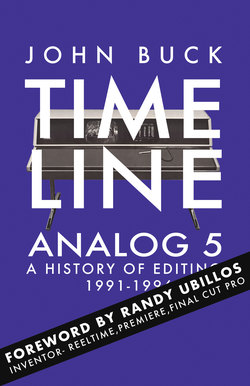Читать книгу Timeline Analog 5 - John Buck - Страница 5
На сайте Литреса книга снята с продажи.
Imperfection
ОглавлениеThe Timeline books are not meant to be a definitive history of editing, photography, films and filmmaking. There are topics and people missing.
Much of editing's early history was not recorded or was recorded with bias. I have not mentioned all inventors, filmmakers and editors.
I have though, tried to address one issue over all others.
If you are sitting in front of a current Macintosh computer running Adobe Premiere or Final Cut Pro X or Avid Media Composer, and the question comes to mind:
"How did we get here?"
"Where did these tools come from?"
I hope Timeline answers those questions.
If you wonder while you are reading:
"Where is this going?"
The answer is the opposite.
The Mac with Final Cut Pro X in front of you.
Yes it can be frustrating to read. I get it.
By its very nature, and somewhat ironically, the timeline of editing history is non-linear. It zigs and zags. That's because I did not set out to write the story of, for example, Georges Demenÿ or Randy Ubillos - and place them in neat chapters. I simply added them, and so many others, to the timeline as they appeared. Random. Hectic.
Oh, and the other elephant in the room.
Despite being an Australian author, versed and schooled in UK English, I have adopted US spellings and grammar for the Timeline series. In general, I have assumed the book style and grammar benchmarks as set by the Chicago Manual of Style. With a few exceptions. If a contributor is quoted or interviewed from the UK or Australia or a country that speaks non-American English, I have kept 'their' spelling.
Especially if the material is from historical text. Colour may remain Colour, not Colour. Acknowledgement doesn't become Aknowledgement. If you spot a mistake, my bad, email me. If it's English vs American English, hang in there.
I invite feedback at all time velocite@gmail.com
